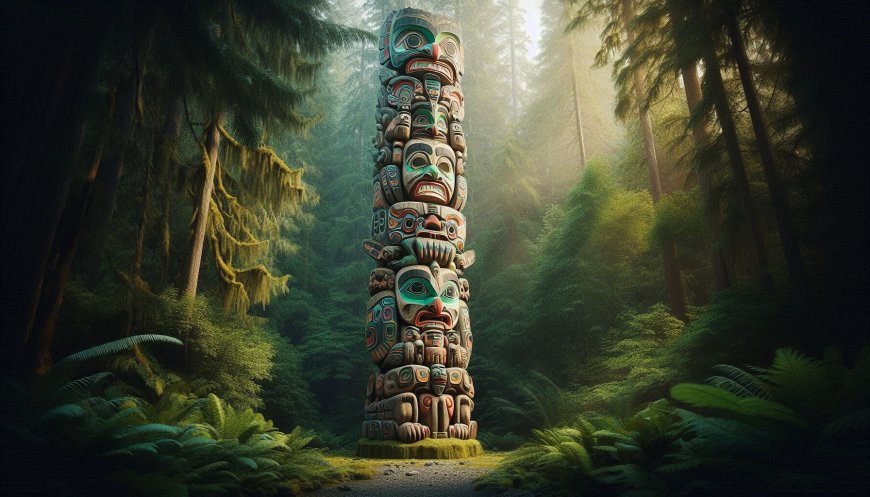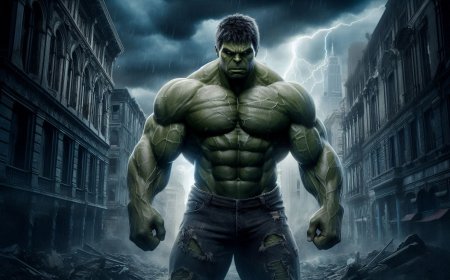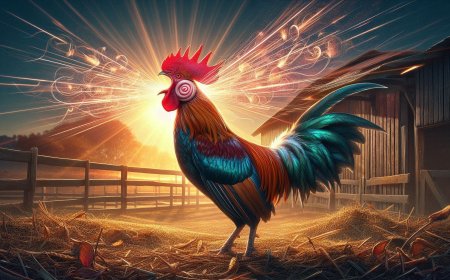Unveiling the Totem Pole: The Hidden Importance of the Bottom
Discover the hidden importance of the bottom figure on a totem pole. Learn how the base supports and upholds the entire structure, revealing its overlooked significance in cultural symbolism.

In the misty forests of the Pacific Northwest, where towering cedar trees touch the sky, the totem poles stand as majestic sentinels, each one a rich tapestry of history, culture, and spirituality. For many who encounter these intricate carvings, there’s a common assumption: the figure at the top of the totem pole holds the most importance. However, this belief is not only misleading; it undermines the profound meanings embedded within these towering works of art. Let’s delve into the world of totem poles and uncover the true significance of the figures at their base.
The Artistry of the Totem Pole
Totem poles are not merely decorative structures; they are powerful representations of family crests, ancestral legends, and significant events in the lives of Indigenous peoples, particularly from the Haida, Tlingit, and Kwakwaka’wakw cultures. Each figure carved into the wood has a purpose, telling a story that links the past to the present.
While it’s easy to be drawn to the vibrant colors and lofty heights of the topmost figures, the reality is that the true essence of the totem pole lies at its foundation. The bottom figures are often the most crucial, serving as the heartbeat of the pole and connecting the stories to the people who revere them.
The Power of Placement
Consider the artistry of the Haida, known for their elaborate totem poles that resonate with strength and bravery. At the base, you might find the “Wasgo,” a formidable sea-wolf that symbolizes these very qualities. Its placement at the bottom is intentional, ensuring that its significance is front and center, where the community can easily honor and recognize it. The Wasgo isn’t merely an ornament; it represents the strength that the Haida people aspire to embody.
Similarly, the Tlingit people demonstrate this practice by carving their most revered clan crests at the bottom of their poles. A bear or a raven, representing respect and honor, serves as a reminder of the values that shape their identity. Positioned at the base, these animals emphasize their role in cultural stories and highlight the respect bestowed upon them by the tribe.
For the Kwakwaka’wakw, totem poles serve as living histories. The most significant ancestors and animals grace the bottom, ensuring that as viewers approach the pole, they are greeted first by the elements that define the family’s legacy. This design choice is a powerful statement about the connections between ancestors and the living community.
The Roots of Misunderstanding
So why do so many people assume that the top figure reigns supreme? Much of it comes down to cultural perception. In Western society, we often equate height with power, leading to the misconception that the highest point denotes the greatest significance. This hierarchical mindset permeates our understanding of authority in various aspects of life, from business to social structures.
Movies and media further perpetuate this myth. Hollywood frequently portrays the top of the totem pole as the prime position, reinforcing the belief that the figure at the peak is the most important. Unfortunately, this portrayal obscures the reality of the intricate cultural meanings woven into totem poles.
Additionally, phrases like “the low man on the totem pole” perpetuate the idea that being at the bottom signifies a lack of importance. In truth, those at the base often embody the core values and stories that hold immense cultural weight. Such misinterpretations do a disservice to the rich heritage and significance of totem poles.
A Call for Understanding and Respect
As we strive to embrace and respect Indigenous cultures, it’s essential to approach the subject of totem poles with a fresh perspective. Acknowledging the true structure and significance of these magnificent carvings is a crucial step in honoring the beliefs and traditions of the tribes that create them.
Next time you encounter a totem pole, don’t just glance at the top. Start at the bottom and work your way up. Appreciate the artistry and significance of the figures at the base—they are the key to unlocking the stories held within the wood. By honoring the carvers’ intentions and respecting the cultural meanings behind each figure, we can deepen our understanding of these remarkable structures.
In the end, the totem pole serves as a reminder of the interconnectedness of community, culture, and history. The figures at its base, often overlooked, stand as powerful symbols of the values and stories that define a people. Let us not just admire the height but also embrace the depth of meaning found in every carving, from the ground up.
What's Your Reaction?






































































































